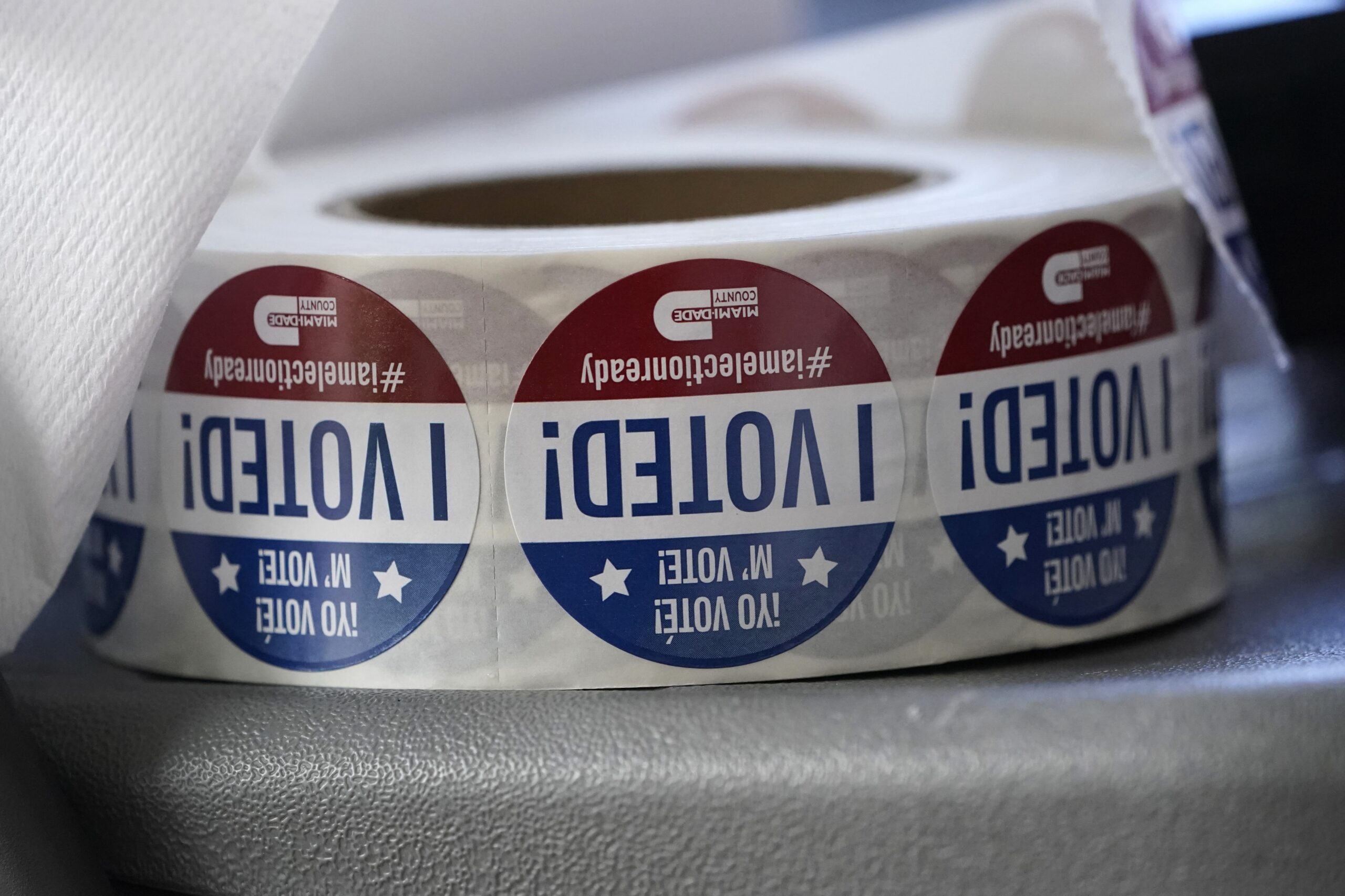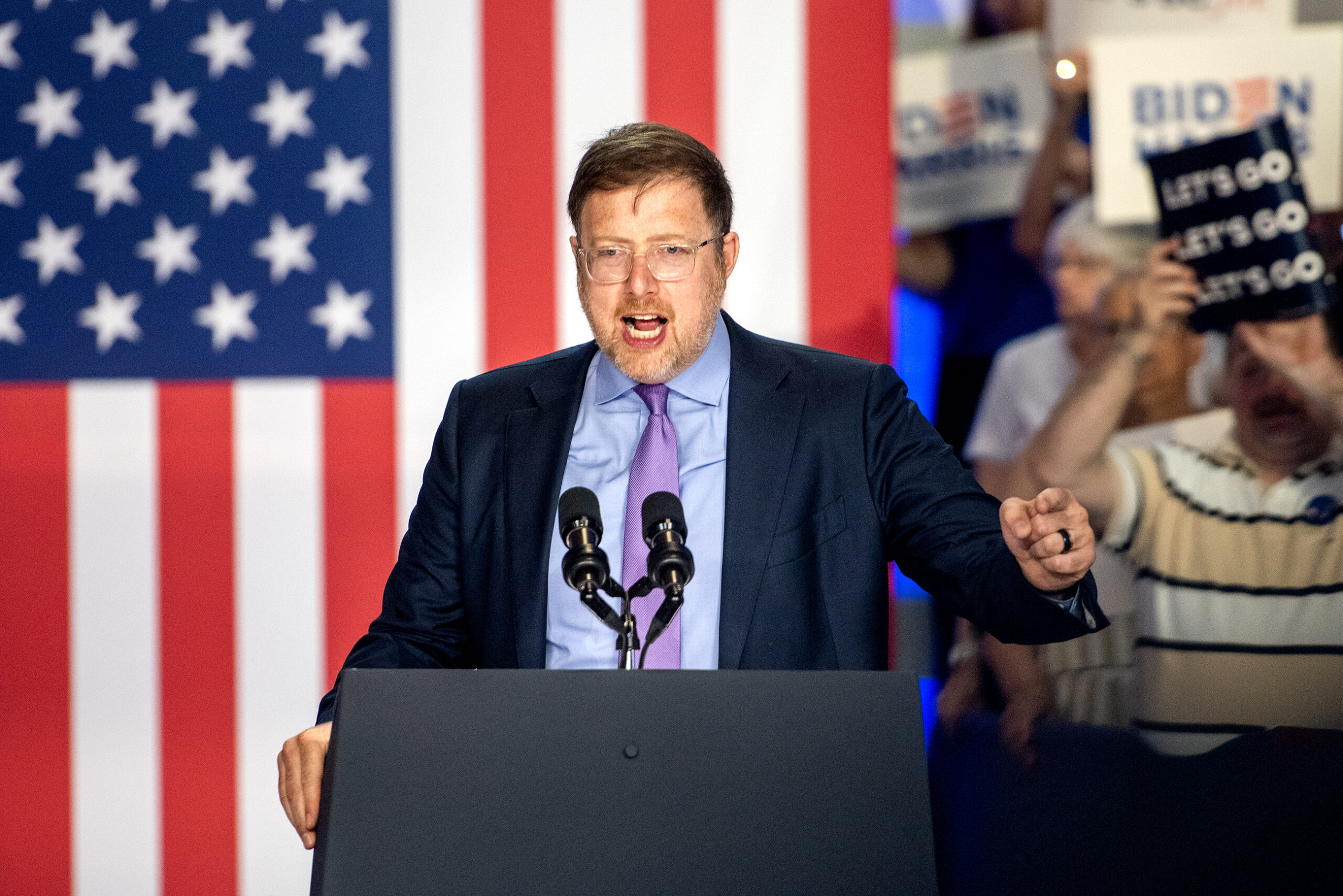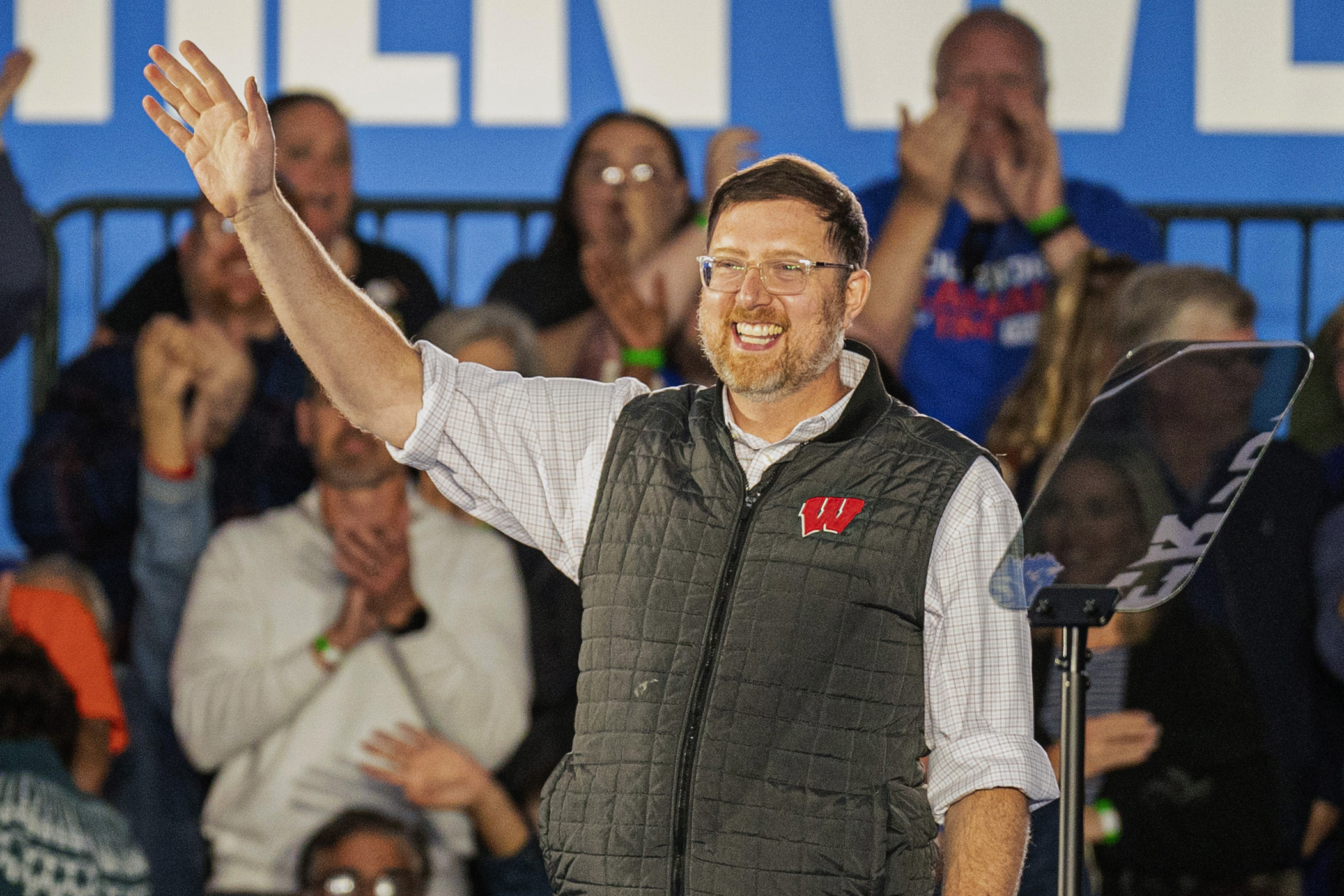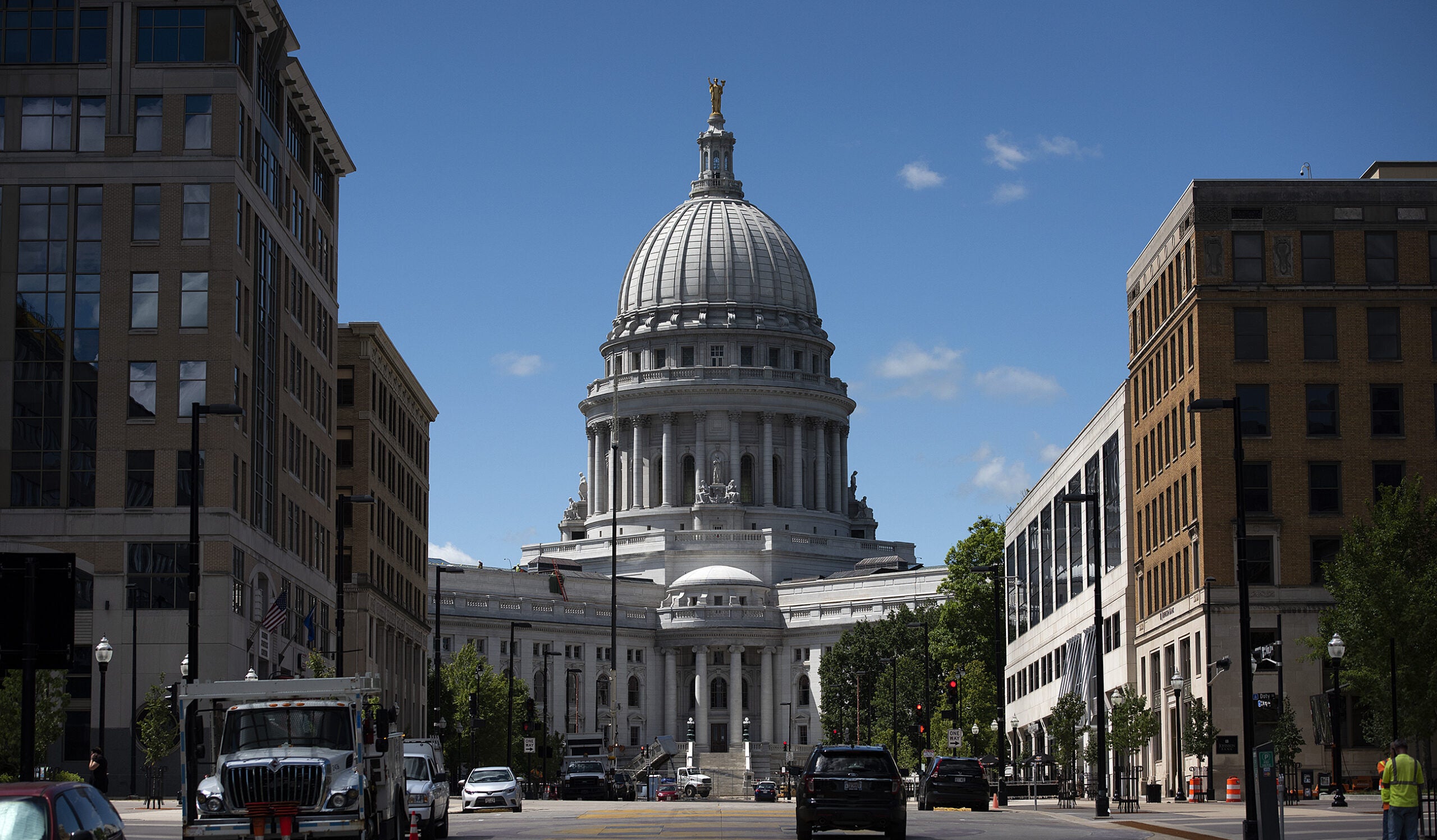Wisconsinites can expect to see political campaigns at all levels ramp up with the 2024 election now less than a year away, a nod to the perennial swing state’s expected pivotal role in deciding who will be the next president.
Wisconsin residents will also vote in a race for U.S. Senate, and campaigns for two potentially competitive U.S. House seats could factor into which party controls Congress.
Uncertainty around state legislative maps only adds to the pressure both parties face in raising money, identifying voters they can reliably turn out or persuade, and building organizations to get those voters to the polls, according to experts and party leaders.
Stay informed on the latest news
Sign up for WPR’s email newsletter.
Along the way, Milwaukee will be the center of the political universe during the Republican National Convention next July.
“Wisconsin is likely to be extraordinarily competitive, and Wisconsin could be the decisive state in the Electoral College,” said University of Wisconsin-LaCrosse Political Science Professor Anthony Chergosky. “When we put those two things together, it’s imperative for political parties to get started early and to engage in robust efforts to get out the vote.”
Both parties are increasing their organizing efforts. The Democratic Party of Wisconsin launched its “One Year To Win” door knocking program this past weekend, which it said covers more than 115 municipalities across the state.
The Republican Party of Wisconsin is also running what it calls a farm team training program to recruit people to work on campaigns or run for office.
Both parties are searching for individuals to nominate to be poll workers for next year’s elections.
‘The suburbs are highly contested’
When it comes to Wisconsin’s political playing field, it’s widely known Democrats have a huge advantage in places like Dane and Milwaukee Counties, while Republicans have strong support in rural areas where organizing looks very different.
It’s the suburbs where voters are increasingly less predictable and considered more up for grabs.
“Right now the suburbs are highly contested,” Chergosky said. “I imagine that there’s going to be a lot of get out the vote efforts in the suburbs of Milwaukee, because increasingly we are seeing competition for votes in that part of this state.”
The Milwaukee suburbs reliably voted Republican for decades, but those voters have been shifting towards Democrats in recent years.
Wisconsin Democrats have been running large voter contact operations since 2017, party chair Ben Wikler said.
“That helped us to win every statewide office in Wisconsin in 2018 for the first time since 1982,” he said.
Wikler said the party’s last major canvassing operation, launched a year before the 2020 presidential election, helped President Joe Biden get elected because “the margin of victory was less than the number of voters that we had talked to during our One Year To Win push.”
It’s difficult to pin down how much impact door-to-door canvassing has on the outcome of an election, but most experts agree it is worth at least a couple of percentage points.
“It’s not like on-the-ground get-out-the-vote efforts are going to massively change the outcome of an election, but they can make a difference at the margins. And many Wisconsin elections are decided at the margins,” Chergosky said.
“Obviously, one early step that political parties need to make is just getting people to think about the election,” he said.
‘Theme of uncertainty’ over legislative elections
While Democrats already have Biden as their presidential candidate, Chergosky said “there’s at least a little bit of uncertainty about who the Republican nominee for president will be.”
Former President Donald Trump is widely seen as the GOP front-runner for president, but the potential for a third party presidential candidate on Wisconsin’s ballot could be a major factor in the race, Chergosky said.
“If Wisconsin is decided by a few thousand votes for the presidential election, a third party candidate could prove decisive in just which way the vote goes,” he said.
There is also uncertainty for how state legislative elections will play out.
Republicans have dominated state legislative races in Wisconsin, thanks in large part to the legislative maps they drew in 2011 and redrew in 2021. Should the current maps remain in place next year, the GOP would almost certainly retain big margins in the Legislature, but a lawsuit challenging those maps before the state Supreme Court could change that.
“With the fight for fair maps advancing in the state, we also have the opportunity to prepare for the possibility of more competitive state legislative races than we’ve seen in Wisconsin in more than a decade,” Wikler said.
Chergosky said it is possible all seats in the state Assembly and Senate will be up for grabs next November depending on how the state Supreme Court rules. Normally only half of the Senate seats would be in play. It is unclear when legislators will find out when they’ll be on the ballot, or what their districts will look like.
“Certainly the Supreme Court of Wisconsin is going to weigh in on the issue of the district maps, but the U.S. Supreme Court can weigh in as well,” Chergosky said. “That’s another aspect of the uncertainty hanging over the 2024 election.”
In the meantime, candidates and political parties can continue to raise money to prepare for the fight, he said.
US Senate, House races also have big stakes
Republican currently have a 221-212 majority in the U.S. House. That makes congressional races in a battleground state like Wisconsin important to both parties.
While Republicans currently hold six out of Wisconsin’s eight congressional districts, Democrats see potential openings. The 3rd Congressional District held by U.S. Rep. Derrick Van Orden, R-Prairie du Chien, and the 1st Congressional District, held by U.S. Rep. Bryan Steil, R-Janesville, are both competitive by the numbers.
Democrats nationally have an even slimmer margin in the U.S. Senate.
“It’s hard to see any path to defend our Democratic Senate majority without reelecting Sen. Tammy Baldwin,” Wikler said.
Chergosky said Wisconsin Democrats have the advantage in that race.
“Right now Democrats are able to engage in a full-fledged effort to get Baldwin reelected because she has announced that she’s running for reelection. She faces no competition within the party, and the Republicans are still trying to search for a nominee,” he said.
Matt Fisher, spokesperson for the Republican Party of Wisconsin, expressed confidence to Wisconsin Public Radio about his party’s chances.
“Wisconsinites are tired of the rising prices and falling wages under Joe Biden and Tammy Baldwin,” Fisher said in a written statement. “Voters know they deserve better from Washington and trust Republicans to build an economy that works for them.”
Wisconsin Public Radio, © Copyright 2025, Board of Regents of the University of Wisconsin System and Wisconsin Educational Communications Board.




